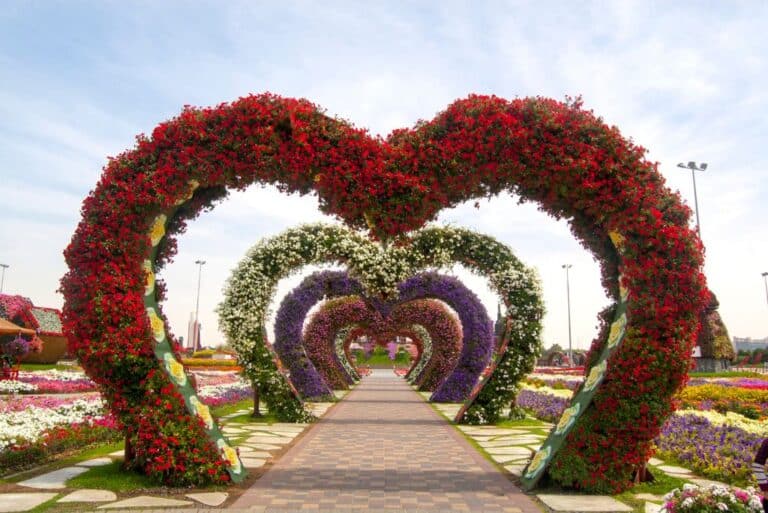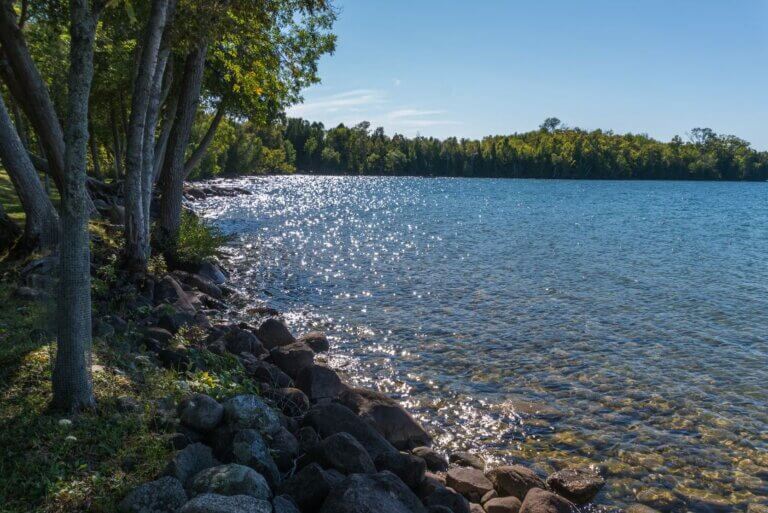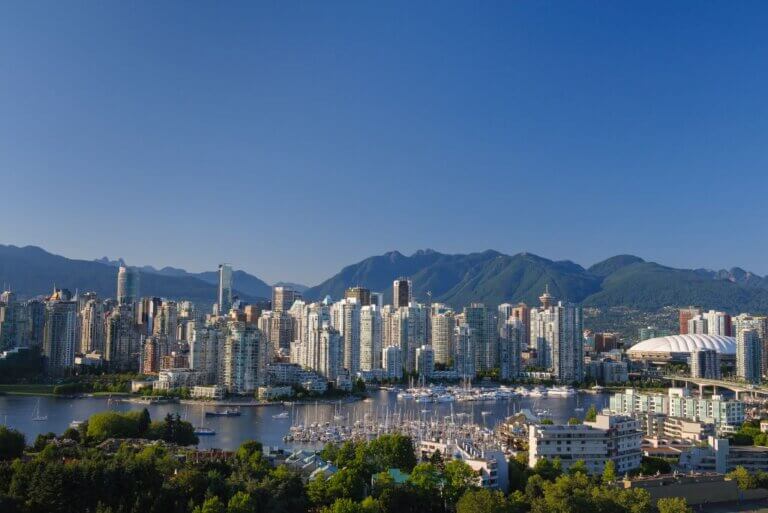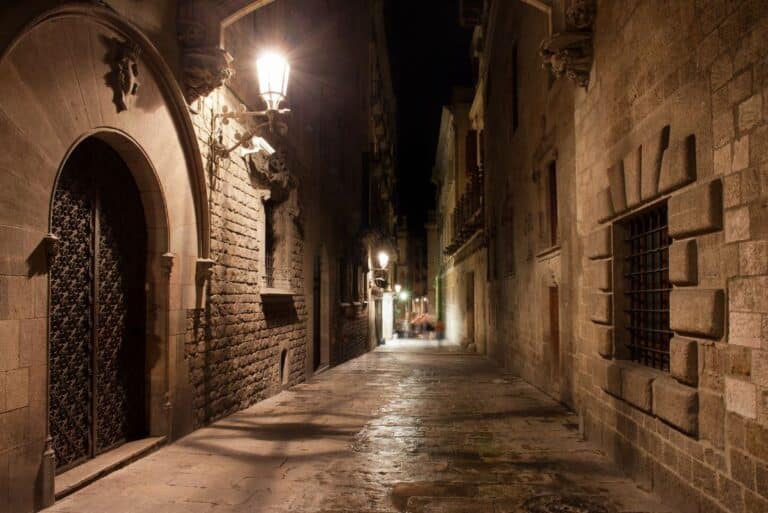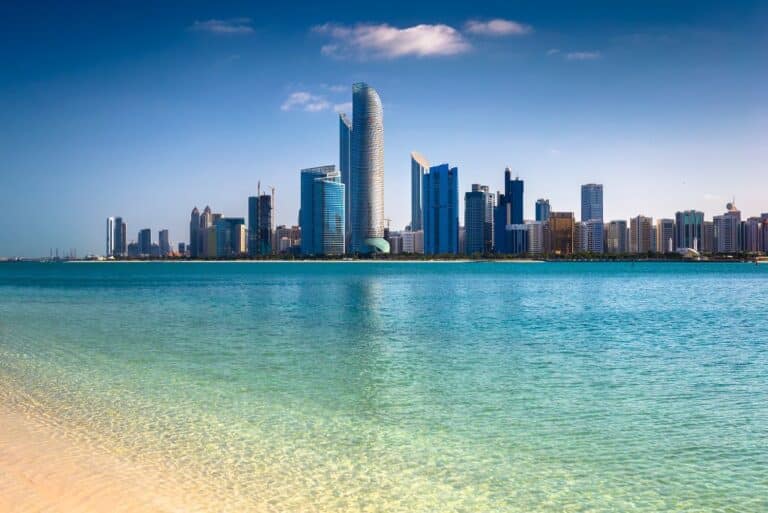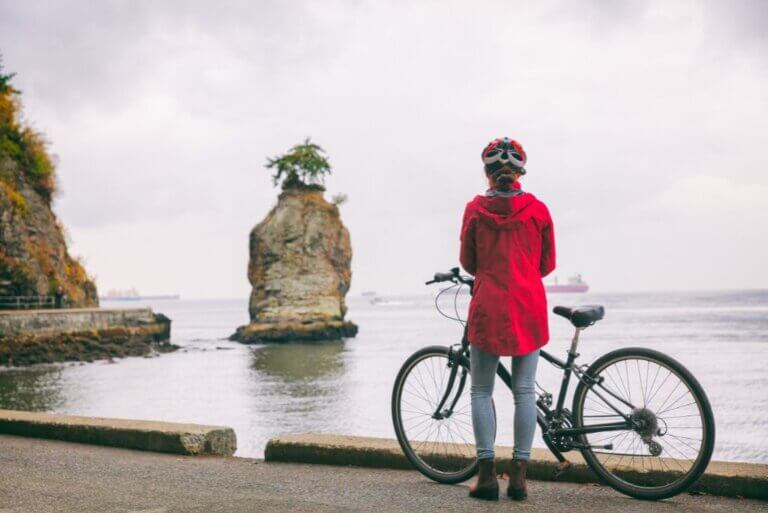Barcelona: Gothic Quarter, La Rambla & Flamenco Show


Planning A Trip To Barcelona? Here Is All You Need To Know About The Gothic Quarter, La Rambla & Flamenco Show!
”Barcelona: Gothic Quarter, La Rambla & Flamenco Show” blog post was updated in 2024.
Barcelona is a captivating destination that seamlessly blends history, culture, and modernity.
Among its many attractions, the Gothic Quarter, La Rambla, and seeing a Flamenco Show stand out as must-do highlights for travelers seeking an authentic and unforgettable experience.
So, prepare to embark on a journey through the heart of Barcelona, as we unravel the allure of the Gothic Quarter, the vibrant charm of La Rambla, and the soul-stirring artistry of Flamenco.
There is a map of the Gothic Quarter, La Rambla, and Flamenco Show at the end which shows the location of all the things I have mentioned.
Gothic Quarter (Barri Gòtic)
The Gothic Quarter, known as “Barri Gòtic” in Catalan, is a historic neighborhood located in the heart of Barcelona’s old city.
With its labyrinthine streets, medieval architecture, and rich history, the Gothic Quarter is a beautiful area that showcases Barcelona’s past.
The neighborhood’s origins date back to the Roman period, as evidenced by the remnants of ancient Roman walls that can still be seen today.
The Roman city was called Barcino.

The Gothic Quarter’s narrow streets, many of which are pedestrian-only, are lined with beautiful architecture, including soaring Gothic cathedrals, historic palaces, and charming squares.
Also, there are numerous boutiques, artisan shops, cafes, and tapas restaurants tucked away in the winding streets.
The Gothic Quarter’s vibrant atmosphere is further enhanced by its lively nightlife scene.
The neighborhood has many bars, clubs, and live music venues where locals and visitors gather to enjoy an evening out.

How long does it take to see the Gothic Quarter?
On average, visitors spend anywhere between a couple of hours to half a day exploring the neighborhood.
If you have limited time, a couple of hours can give you a taste of the Gothic Quarter’s ambiance and main highlights.
For a more comprehensive exploration, allocating half a day or more would allow you to delve deeper into the neighborhood.
Keep in mind that the charm of the Gothic Quarter lies in its maze-like streets and the joy of discovering the hidden corners.
So, allowing some extra time for leisurely wandering and exploring at your own pace can add to the experience.
👉 Since exploring the Gothic Quarter is best done on foot, doing a guided walking tour is a great way to do so: Barcelona Old Town and Gothic Quarter Walking Tour
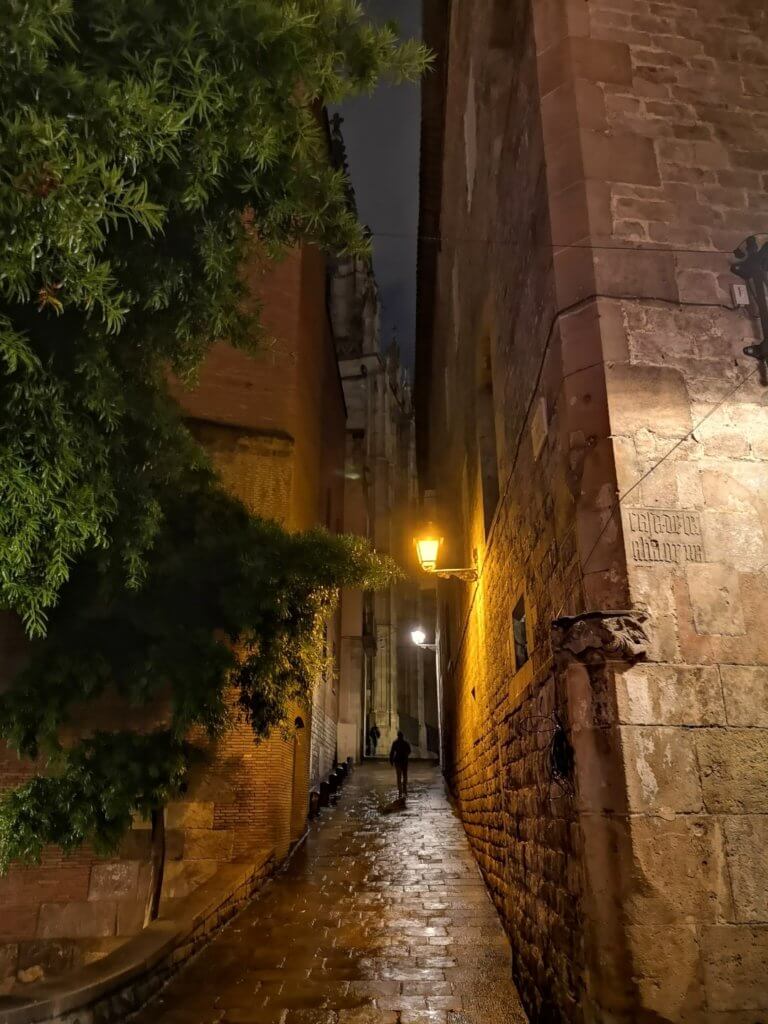
Basilica De Santa Maria Del Mar (Saint Mary Of The Sea)
The Basilica de Santa Maria del Mar is one of the city’s most impressive and beloved architectural treasures.
Construction of Santa Maria del Mar began in 1329 and was completed in 1383, a relatively short time for such a monumental structure.
The basilica’s design is characterized by its pure Catalan Gothic style, featuring pointed arches, elegant rib vaults, and large stained glass windows.

The interior is vast and awe-inspiring, with a sense of grandeur that reflects the medieval craftsmanship and devotion that went into its creation.
In addition, the central nave, with its soaring height and slender columns, creates a feeling of lightness and serenity.
Also, the beautifully detailed rose window at the end of the nave adds a touch of radiance to the space.
One of the highlights of Saint Mary of the Sea, Barcelona is its stunning stained glass windows.
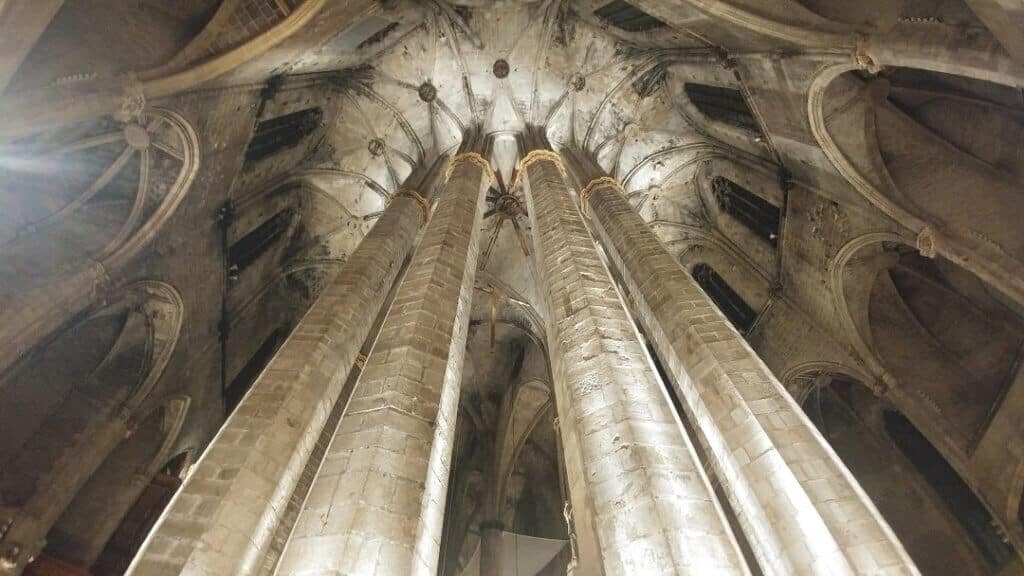
These intricately crafted windows depict biblical scenes and religious motifs, infusing the interior with vibrant colors.
The basilica’s exterior is equally captivating, with its imposing façade and sturdy buttresses.
The elegant simplicity of the façade, adorned with intricate details, invites visitors to marvel at its beauty and contemplate the centuries of history it holds.

What is the history of Santa Maria del Mar?
Santa Maria del Mar has witnessed significant historical events and endured various challenges throughout the centuries.
It has been a symbol of Barcelona’s resilience and determination.
Despite being damaged during the Spanish Civil War, the basilica has been meticulously restored and remains a significant place of worship and cultural heritage.
The entrance is free but you can do a paid guided tour that takes you to the roof terraces.
👉 You can grab your tickets here: Guided Tour of the Interior and Terraces of Santa Maria del Mar
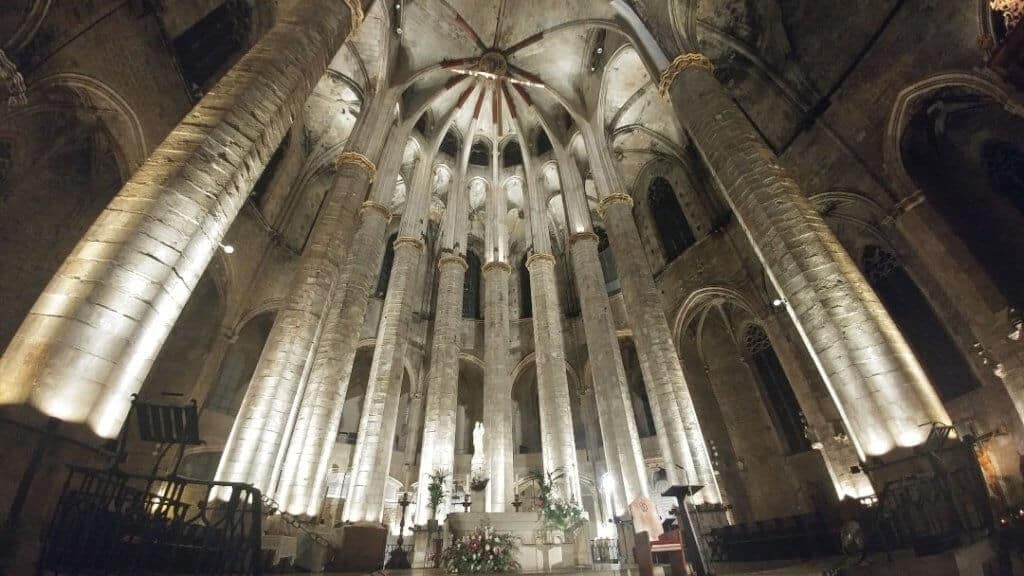
Barcelona Cathedral (The Cathedral Of The Holy Cross And Saint Eulalia)
The Barcelona Cathedral, officially known as the Cathedral of the Holy Cross and Saint Eulalia (Catedral de la Santa Creu i Santa Eulàlia), is a majestic Gothic cathedral located in the heart of Barcelona’s Gothic Quarter.
It is one of the city’s most iconic landmarks and a significant religious and cultural symbol.
Construction of the cathedral began in the 13th century and continued over several centuries, with contributions from different architects and craftsmen.
What is the architectural style of the Barcelona Cathedral?
The architectural style of the cathedral is primarily Gothic, with some elements of Catalan Gothic and Baroque influences.
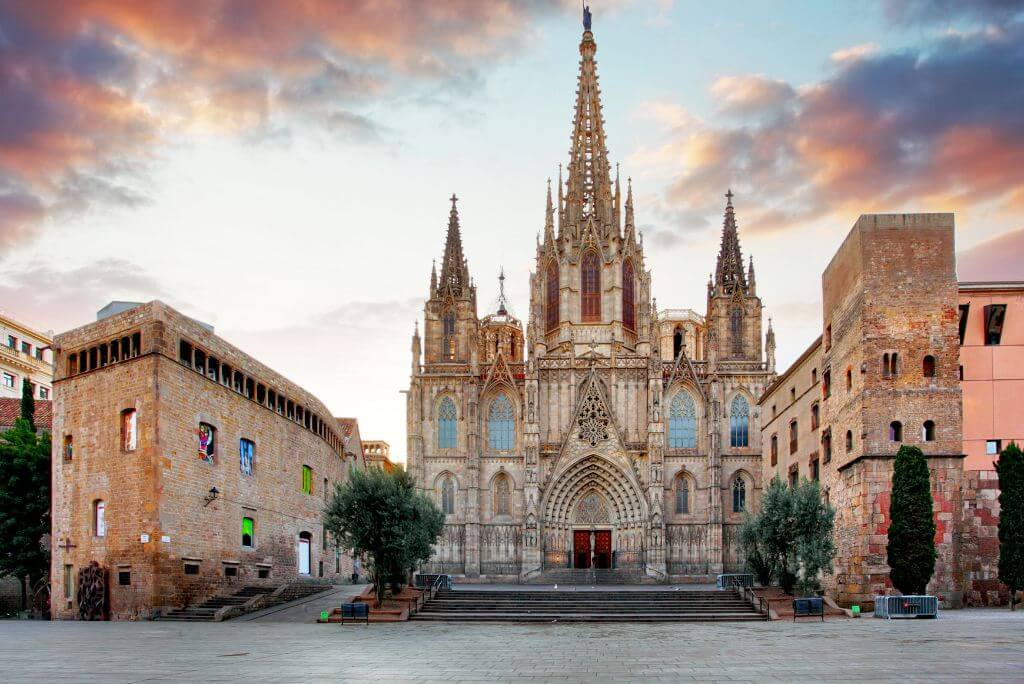
Barcelona Cathedral’s towering spires, intricate stone carvings, and ornate façade showcase the craftsmanship and attention to detail that went into its construction.
Also, the interior of the cathedral is equally impressive, with its vast space and soaring heights.
The central nave is flanked by numerous chapels and side aisles.
In addition, the stunning cloister is adorned with beautiful sculptures, lush gardens, and a tranquil courtyard.
The chapels within the cathedral house religious artifacts, artworks, and the tombs of notable figures from Barcelona’s history.
One of the highlights of the Barcelona Cathedral is the Chapel of Santa Lucía, which houses the shrine of Saint Eulalia, the patron saint of Barcelona.
The crypt beneath the cathedral is her final resting place.
She was martyred during the Roman era and is revered as a symbol of the city’s resilience.

Visitors to the Barcelona Cathedral can also explore the rooftop terrace, which offers panoramic views of the city.
It allows for an up-close look at the cathedral’s stunning architectural details, including its gargoyles and intricate stone decorations.
Beyond its architectural and historical significance, the Barcelona Cathedral continues to be an active place of worship.
The cathedral is free only for prayer or worship and if you want to visit (as a tourist) you need to buy a ticket.
👉 Grab your ticket here: Cathedral of Barcelona Entrance Ticket with Access to the Rooftop
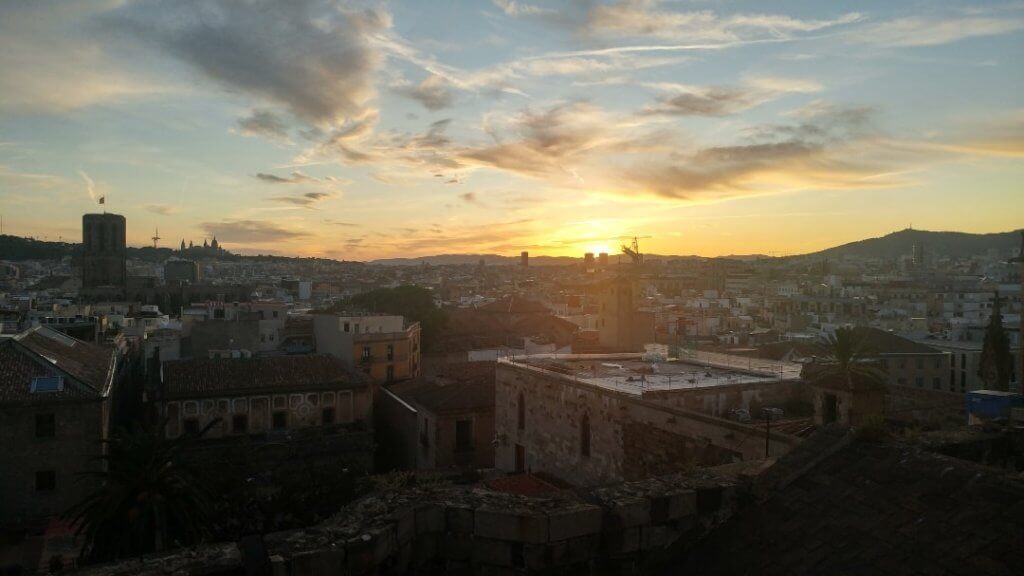
Palau de la Música Catalana (Palace Of Catalan Music)
Palau de la Música Catalana, which translates to the Palace of Catalan Music, is a stunning concert hall and architectural masterpiece.
The renowned Catalan architect Lluís Domènech i Montaner designed and oversaw the construction of Palau de la Música Catalana between 1905 and 1908.
Originally intended as a home for the Orfeó Català, a prominent Catalan choral society, the building has evolved into a prestigious venue that hosts concerts, recitals, and various musical performances.

What is the architectural style of Palau de la Música Catalana?
The architectural style of Palau de la Música Catalana is a striking blend of Catalan Modernism, Art Nouveau, and unique decorative elements.
One of the most remarkable features of Palau de la Música Catalana is its stunning stained glass dome.
It illuminates the main concert hall with natural light.
The dome, along with the large stained glass windows and skylights, creates a captivating interplay of light and color within the space.

The main concert hall, known as the Sala de Concerts, is a visual feast with its ornate columns, sculptures, and intricate carvings.
In addition, the focal point of the hall is the grand organ, adorned with golden pipes and surrounded by beautiful sculptural elements.
The stage is set against a backdrop of intricate mosaic designs, adding to the overall visual splendor of the space.
Palau de la Música Catalana is not only admired for its architectural beauty but also for its exceptional acoustics.
Therefore, the concert hall is famous for its ability to create an immersive listening experience, enhancing the performances held within its walls.

Recognized as a UNESCO World Heritage Site since 1997, the Palau de la Música Catalana stands as a testament to the rich cultural heritage of Catalonia and its dedication to the arts.
It continues to serve as a hub for musical excellence, hosting a wide range of concerts and cultural events throughout the year.
Can you tour Palau de la Música Catalana?
Visitors to Palau de la Música Catalana can join guided tours to explore the building’s architectural marvels.
The tours include the main concert hall, the organ loft, and the various ornate rooms.
Attending a performance at the Palau is a truly unforgettable experience.
It allows you to immerse yourself in the beauty of music within this breathtaking architectural gem.
There is a subway stop next to it – Urquinaona Metro Stop.
👉 If you want to do a self-guided tour, check out this link: Barcelona: Palau de la Música Self-Guided Tour
👉 If you prefer a guided tour, then opt-in for this one: Palau de la Música Guided Tour
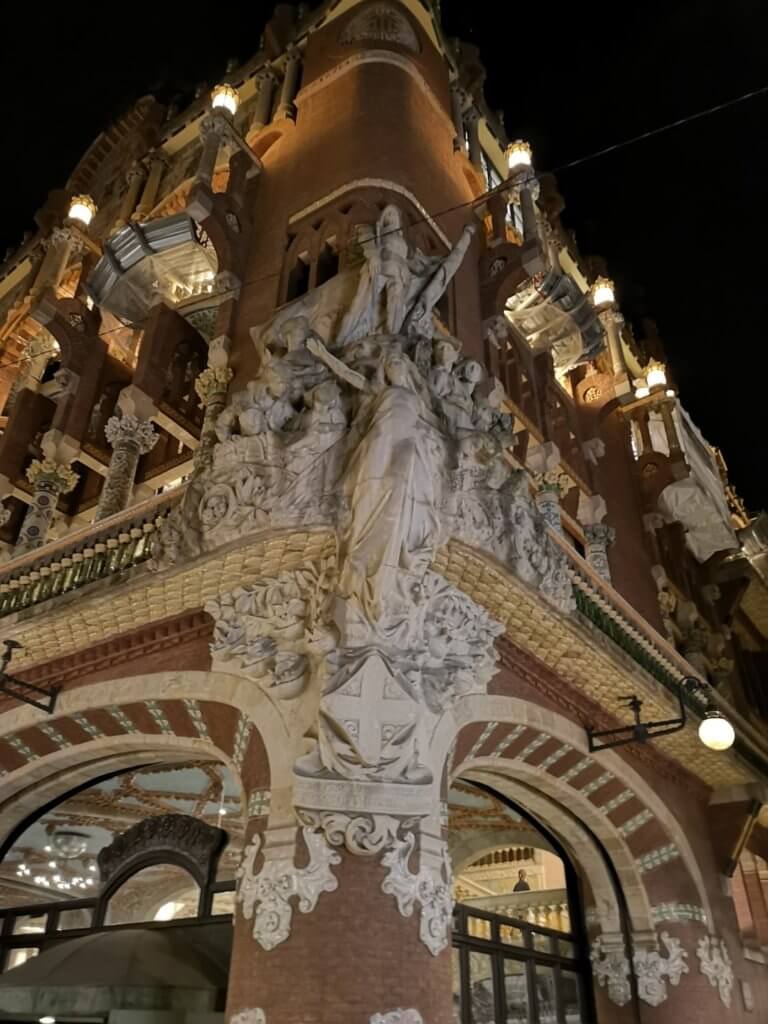
🦄 Related Spain Posts:
Day Trip To Andorra From Barcelona
13 Best Gaudi Barcelona Tours To Take
22 Best Things To Do In Barcelona In October
El Pont Del Bisbe (The Bishop’s Bridge)
El Pont Del Bisbe is known as the “Bishop’s Bridge” in English.
The bridge is an ornate, neo-Gothic-style bridge that connects the buildings of the Generalitat de Catalunya (the government of Catalonia) with the Casa dels Canonges (the residence of the Canons) in the Plaça de Sant Jaume.
It is located on Carrer del Bisbe (the Street of the Bishop) and the closest Metro Station is Jaume which is on the L4 Yellow Line.
It is a bit hard to find so remember it is located close to the Barcelona Cathedral.

The architect Joan Rubió i Bellver designed and oversaw the construction of the bridge between 1928 and 1929.
It was created as part of the overall urban planning for the Gothic Quarter during the time of the International Exposition of Barcelona in 1929.
The design of El Pont del Bisbe features intricate stone carvings, arches, and gargoyles, giving it a medieval aesthetic.

One of the most distinctive features of El Pont del Bisbe is the quatrefoil, a four-leaf clover-like design, located at the center of the bridge.
It is said that the quatrefoil symbolizes good luck.
El Pont del Bisbe is a popular tourist attraction due to its architectural beauty and historical significance.
Visitors often admire the intricate details of the bridge while exploring the narrow streets of the Gothic Quarter.
Also, there are many stories and legends associated with El Pont del Bisbe that you can learn about from a ghost tour in Barcelona.
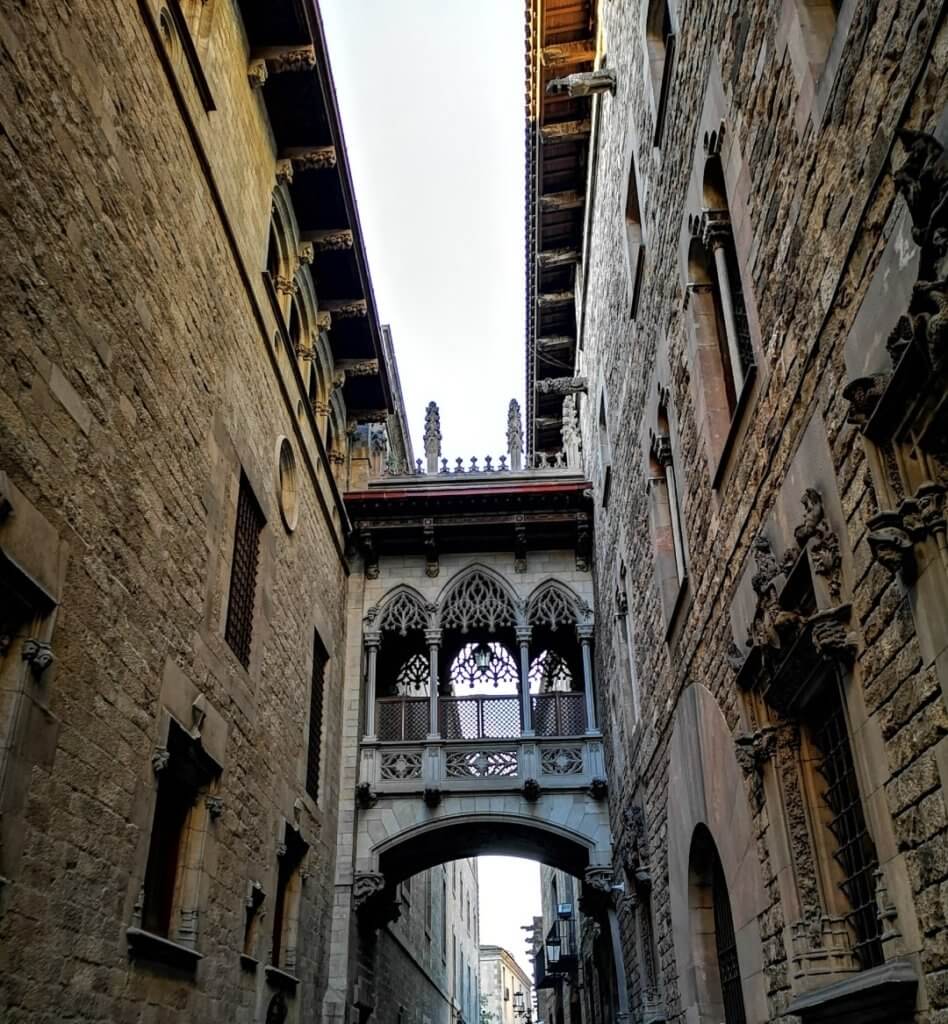
Picasso Museum
Also known as the Museu Picasso, the Picasso Museum is a renowned art museum dedicated to the works of the legendary Spanish artist, Pablo Picasso.
It is located in the El Born neighborhood of Barcelona, near the Gothic Quarter.
The museum is inside several adjoining medieval palaces, which adds to its historical and architectural charm.
The Picasso Museum in Barcelona primarily focuses on Picasso’s formative years and showcases an extensive collection of his early works.

It provides a comprehensive overview of Picasso’s artistic development, highlighting his extraordinary talent and diverse artistic styles.
The museum’s permanent collection consists of over 5,000 works, including paintings, sculptures, drawings, ceramics, and engravings.
Also, visitors can explore the evolution of Picasso’s art and gain insights into his creative process.
In addition to the permanent collection, the Picasso Museum also hosts temporary exhibitions.

They showcase works by Picasso as well as other artists who influenced or were influenced by him.
These exhibitions offer a broader perspective on Picasso’s art and his impact on the art world.
The museum is Free all Thursday afternoons from 5.00 pm to 8.00 pm as well as the first Sunday of every month all day.
Keep in mind that the museum is closed on Mondays.
👉 Grab your ticket here: Barcelona: Skip-the-line Guided Tour of Picasso Museum
There are so many little squares, churches, museums, and buildings that are worth checking out in the Gothic Quarter.
This makes it impossible for me to mention all of them.
However, some honorable mentions are Plaça de Sant Jaume, Basílica de Santa Maria del Pi, Placa George Orwell, MUHBA Temple d’August, Plaça del Rei, Sant Felip Neri Square, etc.
La Rambla
La Rambla, also known as Las Ramblas, is a vibrant pedestrian promenade in Barcelona.
It is one of the city’s most iconic and bustling streets, attracting locals and tourists alike.
La Rambla stretches for approximately 1.2 kilometers.
It connects Plaça de Catalunya (metro stop Catalunya) in the north.
With the Christopher Columbus Monument (metro stop Drassanes) and Port Vell in the south.
Plaça de Catalunya is a spacious square with numerous significant streets radiating from it.
The square features a central fountain, an assortment of statues, and an abundance of pigeons roaming about.
Once you get off the subway, you will see La Rambla is one of the streets that starts from the square.
There are other subway stops along La Rambla, so if you get tired you can hop on the Metro (if you don’t want to walk the entire street).
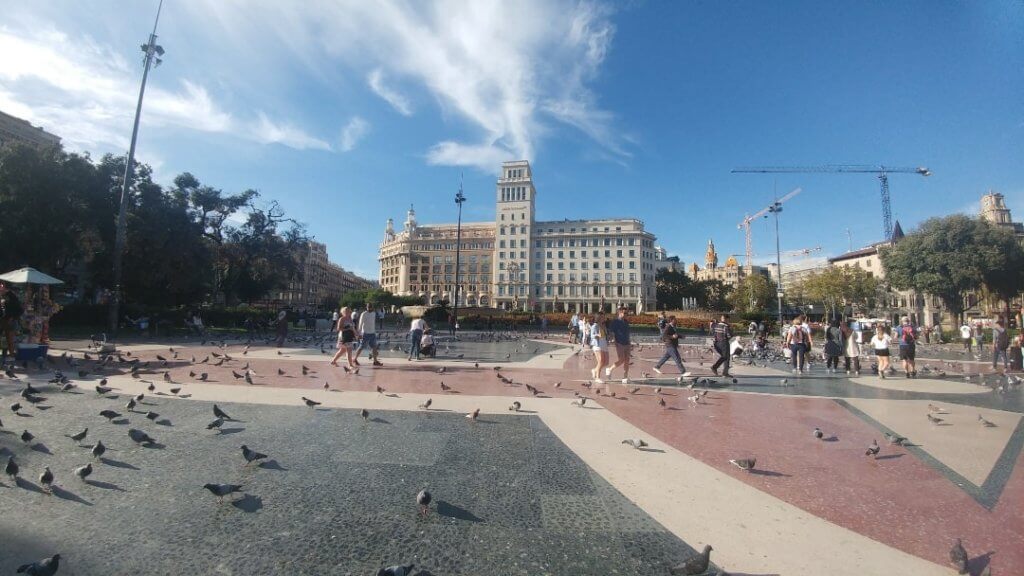
Also, on La Rambla, you will find a variety of shops, restaurants, cafes, street performers, flower stalls, and kiosks selling souvenirs.
Essentially, you will walk in the middle of the treelined street (La Rambla) and there will be two single-car lanes on each side.
I do not recommend eating or buying anything while you’re there as it is overpriced and not authentic.
Having said that a nice stroll down La Rambla is a must.

The Gothic Quarter is going to be on your left as you walk down from Placa de Catalunya, so you can definitely check out both of them on the same day.
The end of La Rambla is marked by the monument of Christopher Columbus at Port Vell (South).
At this point, you will see the Mediterranean Sea.
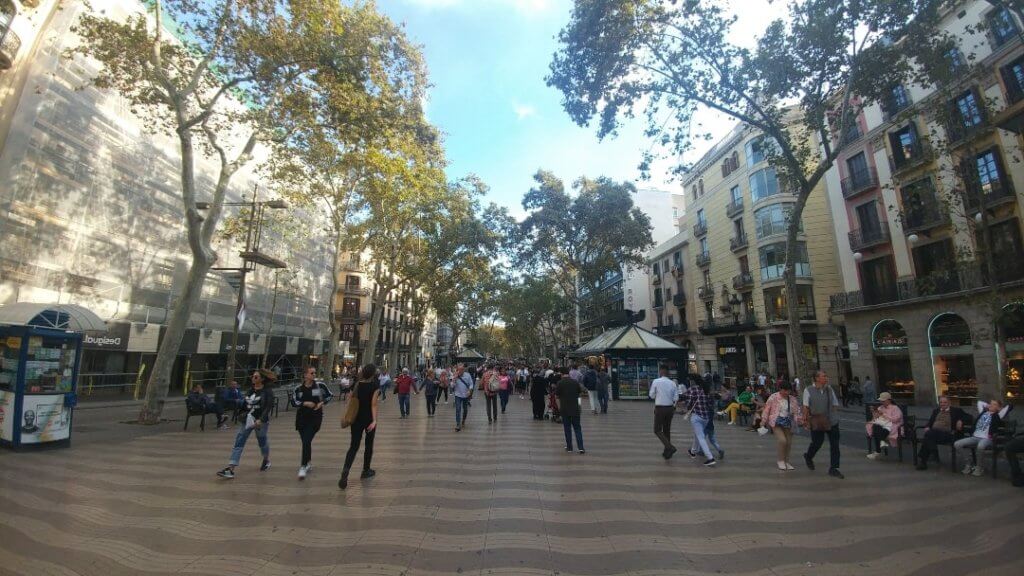
La Mare De Déu De Betlem (Church Of Saint Mary Of Bethlehem)
The Church of Saint Mary of Bethlehem in Barcelona has a rich history.
It was established in 1553 by the Company of Jesus (the Jesuits), a religious order founded by Saint Ignatius of Loyola.
Initially, the church was built on the grounds of a former chapel dedicated to Our Lady of Bethlehem.
The consecration took place in 1555, but unfortunately, the church was later destroyed by a devastating fire during the 17th century.
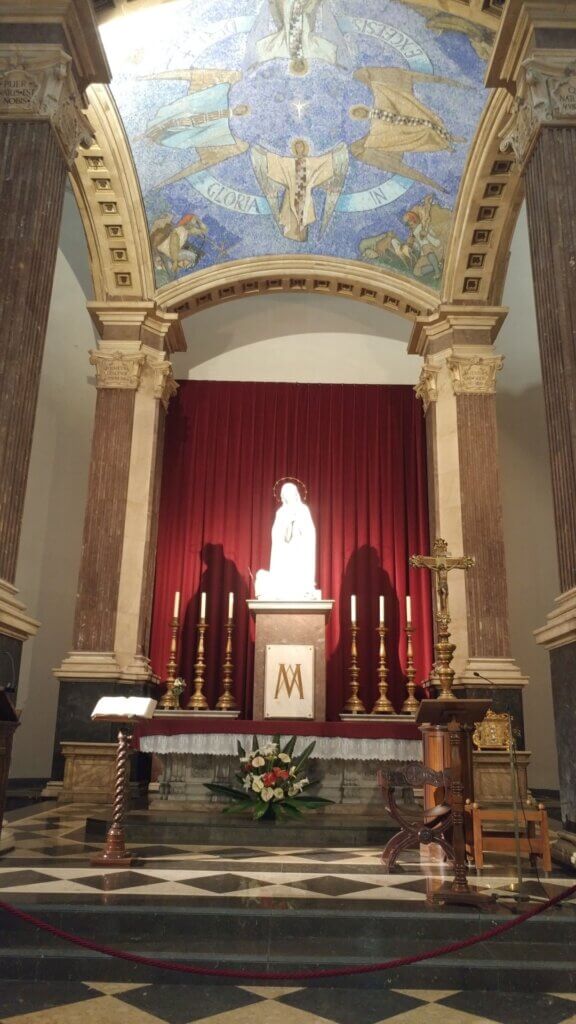
In the early 18th century, a new church was constructed in Baroque style.
However, it faced closure when the Jesuits were expelled from Spain in 1767.
The church then underwent a transition and became the parish church of Mare de Déu de Betlem in 1835.
Tragically, it suffered a second fire during the Spanish Civil War in 1936, resulting in the destruction of the roof and the magnificent Baroque interior.
Despite the hardships, remnants of the original church still stand today as a testament to its past.
Notable sculptures of Saint Ignatius of Loyola and Francisco Borja, a nobleman and Jesuit saint, embellish the facade.
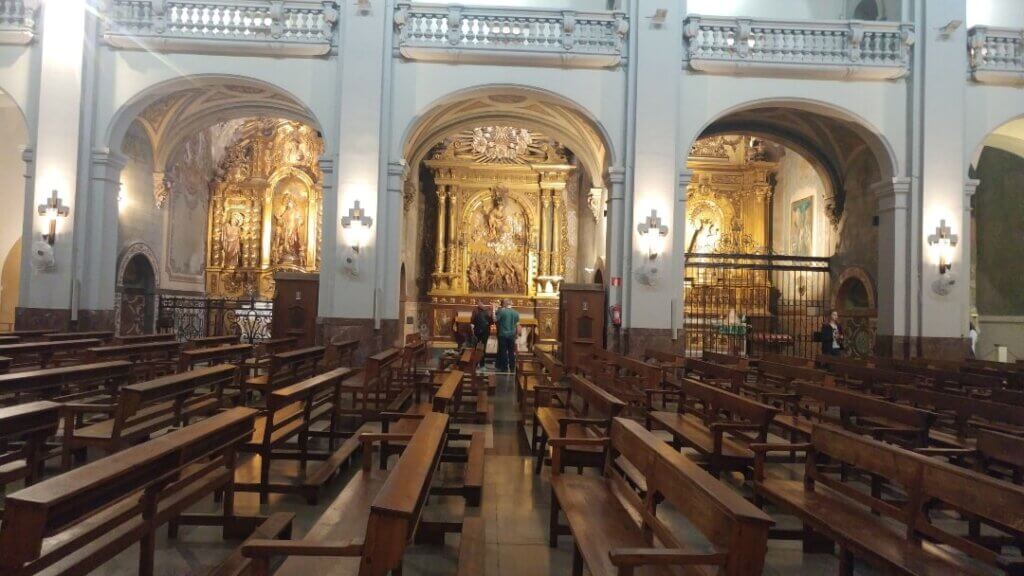
Inside, the church follows a basilica-style layout with a single nave and a semi-circular apse.
The side chapels, connected to one another, have elliptical domes.
Also, the central altar has a single white statue of Mary and red curtains behind her.
In addition, the church has an assortment of valuable artwork, encompassing paintings, sculptures, and liturgical artifacts.
The Church of Saint Mary of Bethlehem is free to enter.
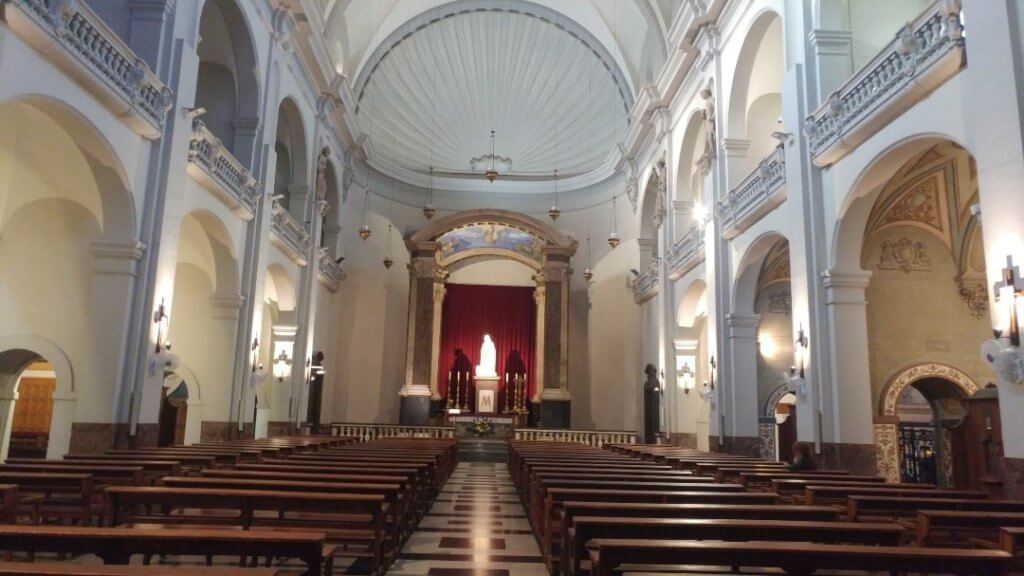
🦄 If you want to learn more about Mallorca, check out this blog post:
A Day Trip Around Mallorca
5 Things You Must See In Palma De Mallorca
La Boqueria (Mercat De La Boqueria)
The Mercat de la Boqueria, also known as the Boqueria Market, is a vibrant and bustling food market located just off of La Rambla.
Inside the Mercat de la Boqueria, you’ll find a vibrant and colorful array of stalls and counters.
They offer a vast selection of fresh produce, cured meats, seafood, freshly squeezed juices, bread, gelato, and other culinary delights.
It is a nice place to grab a snack or some fruit but keep in mind it is not the cheapest place to buy them.
A lot of people stop here for lunch so it can get busy. We got a small meat snack and some juice.
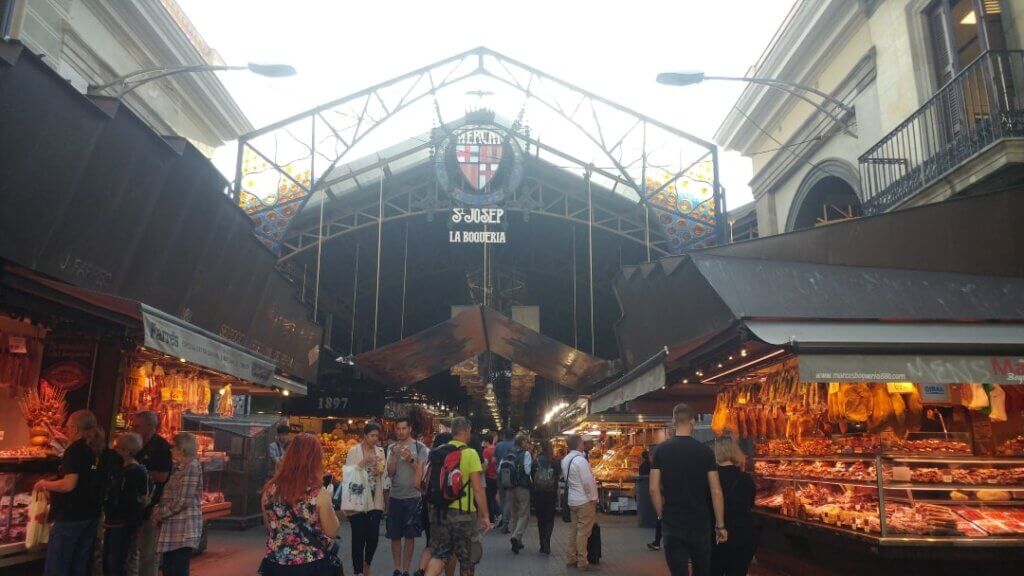
The history of the Boqueria Market dates back to the 13th century when it began as an open-air market outside the city walls.
Over time, it grew in popularity and became a permanent fixture in Barcelona.
Today, it is one of the most famous markets in Europe and a popular destination for both locals and visitors.
In addition, the market has bars, cafes, and small restaurants where you can enjoy a quick bite or a refreshing drink.
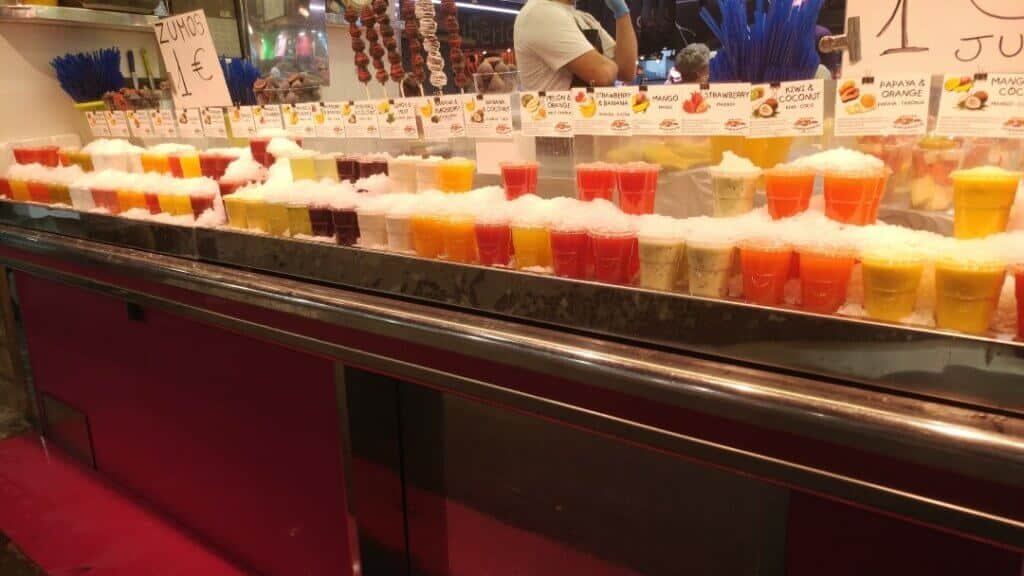
Many visitors choose to grab a seat at one of the counters and savor some of the market’s delicious tapas and traditional Catalan dishes.
The Mercat de la Boqueria is not only a place to shop for food but also a vibrant cultural and social hub.
It offers a glimpse into the daily life of the locals and reflects the rich culinary traditions of Barcelona and Catalonia.
👉 If you are a foodie, check out this walking tour: Barcelona Markets Walking Tour: Las Ramblas, La Boquería, and Beyond
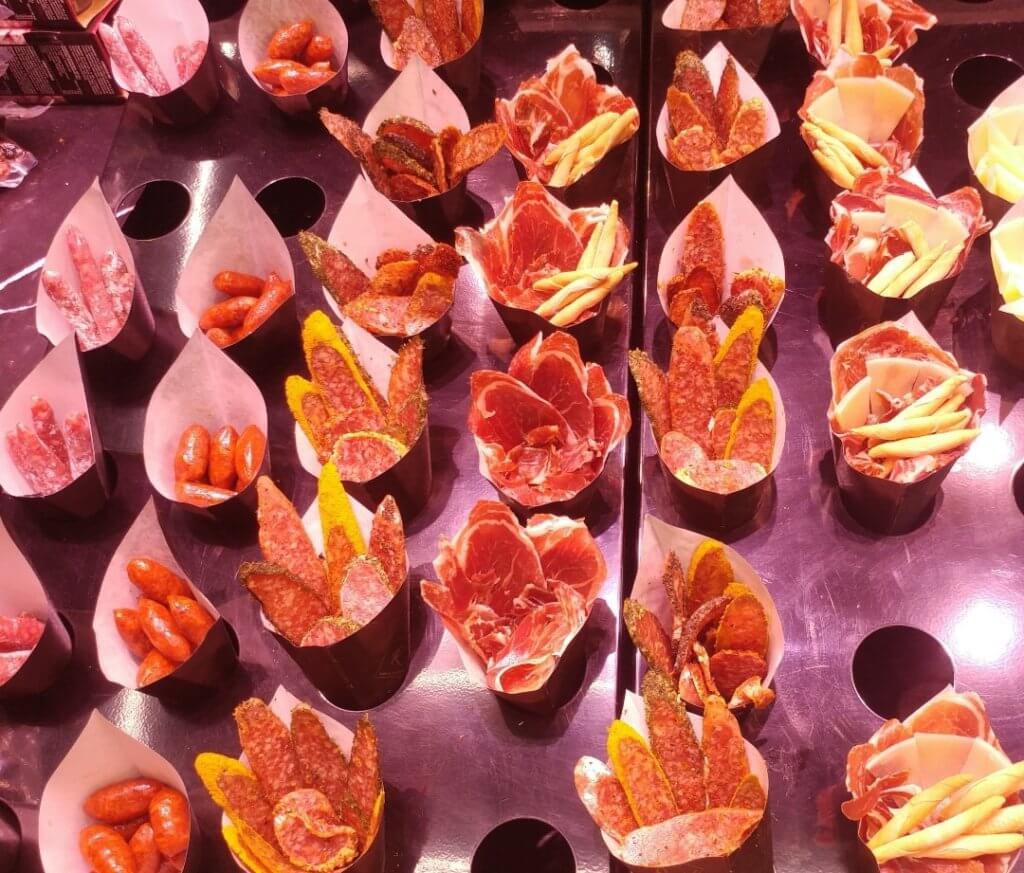
Miró Mosaic
The Miró Mosaic, officially known as the Mosaïc de Miró, is a colorful mosaic artwork located on La Rambla.
It is an homage to the renowned Catalan artist Joan Miró, designed by Joan Gardy Artigas in collaboration with Miró himself.
The mosaic is on the pavement, near the Liceu Theatre, and outside Liceu Metro Station.
The Miró Mosaic is in the shape of a large circle, there is no way you will miss it.
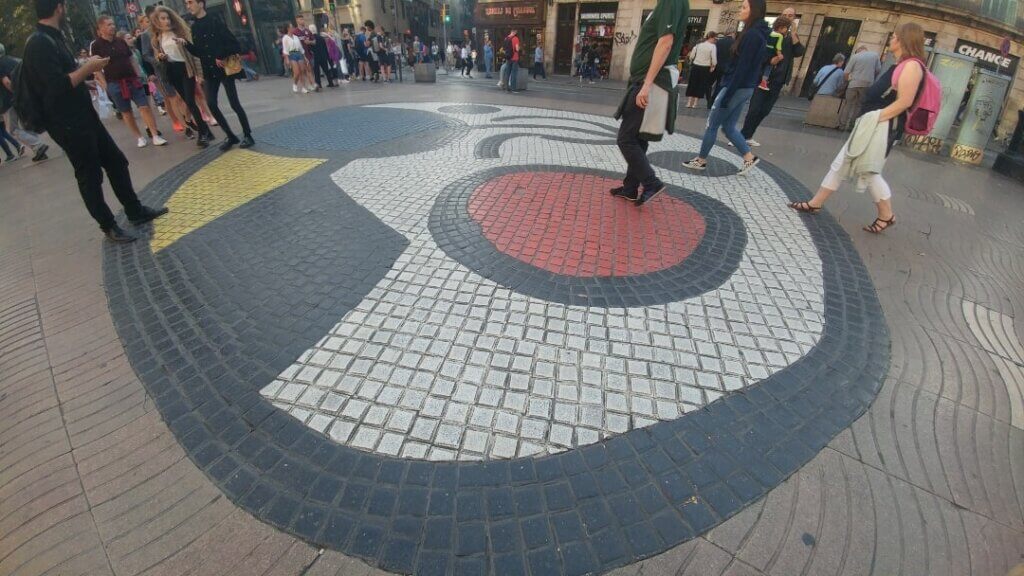
What does the Miró Mosaic consist of?
It consists of a series of ceramic tiles arranged in a vibrant and abstract composition.
The mosaic features bold colors, organic shapes, and playful forms that reflect Miró’s unique artistic style.
If you look closely you can actually see the tile that is signed by the artist.
The Miró Mosaic was created in 1976 as part of a larger urban revitalization project along La Rambla.
It was intended to bring art to the streets and make it accessible to the public.
Miró was known for his imaginative and symbolic approach to art.
Therefore, the mosaic captures the essence of his work in an interactive way.
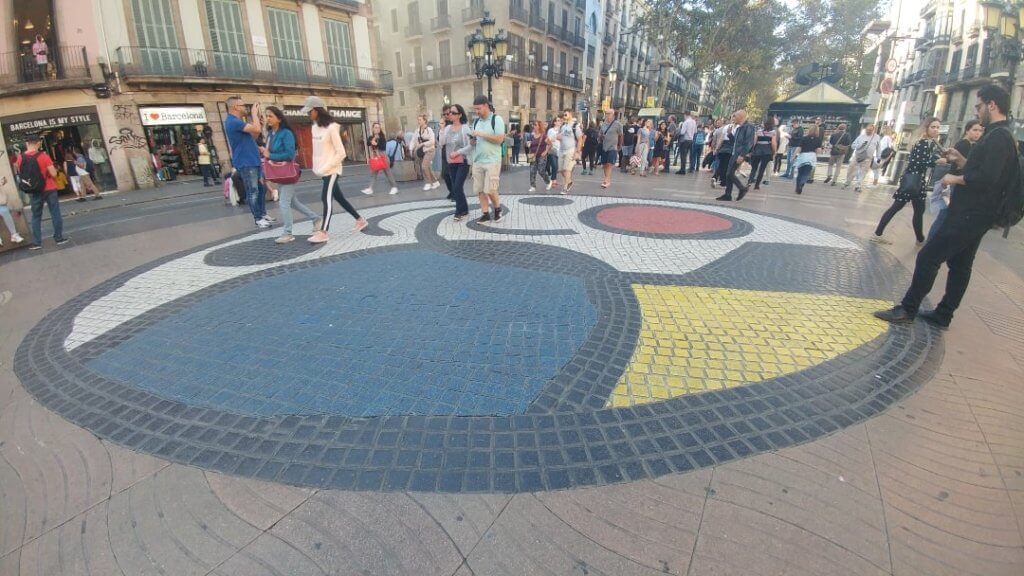
The Miró Mosaic adds a vibrant and artistic touch to La Rambla.
It enhances the already lively and cultural atmosphere of the boulevard.
Also, it serves as a reminder of Barcelona’s rich artistic heritage and its ongoing commitment to promoting art in public spaces.
Beside the Miró Mosaic, you will see the Casa Bruno Cuadros which back in the day used to be an umbrella shop.
The Catalan architect Josep Vilaseca designed Casa Bruno Cuadros in 1883.
The building’s facade features an eclectic mix of architectural styles and is known for its ornate and colorful design.
In addition, the most prominent feature of the building is the Chinese dragon on the corner of the facade.
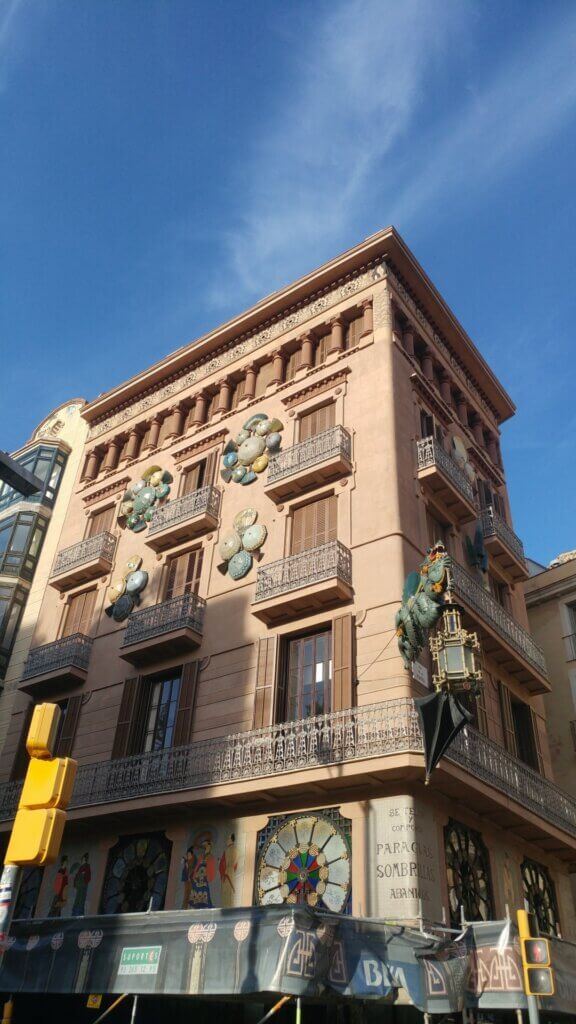
Palau Guell (Palace Guell)
Palau Güell is a magnificent mansion located just off of La Rambla.
It was designed by the renowned architect Antoni Gaudí and is considered one of his early masterpieces.
Palau Güell is a UNESCO World Heritage site and a testament to Gaudí’s innovative architectural style.
The construction of Palau Güell began in 1886 and was completed in 1890.
It was commissioned by Eusebi Güell, a wealthy industrialist and Gaudí’s prominent patron.
The mansion served as the private residence for the Güell family.
Yes, this is the same person who commissioned the world-famous Park Guell in Barcelona.
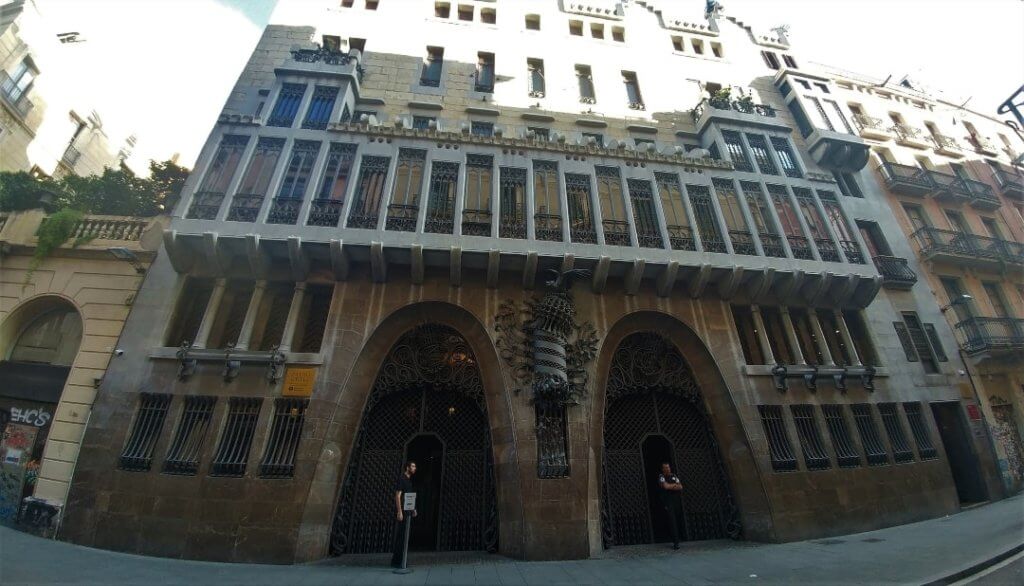
Palau Güell showcases Gaudí’s unique architectural elements and his use of innovative techniques.
The exterior of the building features a stunning combination of stone, wrought iron, and colorful tilework (roof).
The most distinctive feature of the mansion is definitely its roof.
It has intricately designed chimneys, ventilation towers, and a central dome crowned by a cross.

What is inside Palau Guell?
Inside Palau Güell, visitors can explore the various floors and rooms, each meticulously designed with Gaudí’s artistic vision.
The interior exhibits a harmonious blend of decorative elements, including elaborate woodwork, stained glass, mosaic tiles, and imaginative details.
One of the highlights of Palau Güell is the grand central hall, known as the Saló de Cent (Hall of the Hundred).
This space features soaring ceilings, magnificent chandeliers, and a central dome with a skylight that allows natural light to illuminate the room.
Palau Güell is a testament to Gaudí’s ability to create immersive and awe-inspiring architectural spaces.
It showcases his genius for integrating functionality, aesthetics, and symbolism.
Therefore, the mansion stands as a significant landmark in Barcelona.
Also, it offers visitors a glimpse into the early work of one of the most influential architects in history.
🦄 If you want to learn more about the other Gaudi creations, check out these blog posts: Barcelona: Casa Batllo, Casa Mila & Casa Vicens
Tips For Visiting Sagrada Familia For The First Time

Placa Reial (The Royal Square/Plazza)
Plaça Reial, also known as Plaza Real in Spanish, is a vibrant and historic square situated just off of La Rambla.
Plaça Reial is famous for its architectural beauty, lively atmosphere, and its popularity among locals and tourists.
Francesc Daniel Molina i Casamajó designed the square in the mid-19th century.
It features elegant neoclassical buildings surrounding a central open space.

The square is lined with palm trees, fountains, and decorative street lamps designed by Antoni Gaudí during his early career.
It has vibrant terraces aligned with restaurants, bars, and cafes.
Plaça Reial is famous for its bustling nightlife, making it a popular destination for locals and visitors seeking a lively atmosphere in the evenings.

One of the main focal points of the square is the Fountain of the Three Graces, a centerpiece adorned with the three mythical goddesses from Greek mythology.
The square hosts various events, markets, and performances throughout the year, including concerts, street art shows, and cultural celebrations.
It is a place where locals and visitors come together to enjoy the vibrant atmosphere, socialize, and soak up the lively spirit of Barcelona.
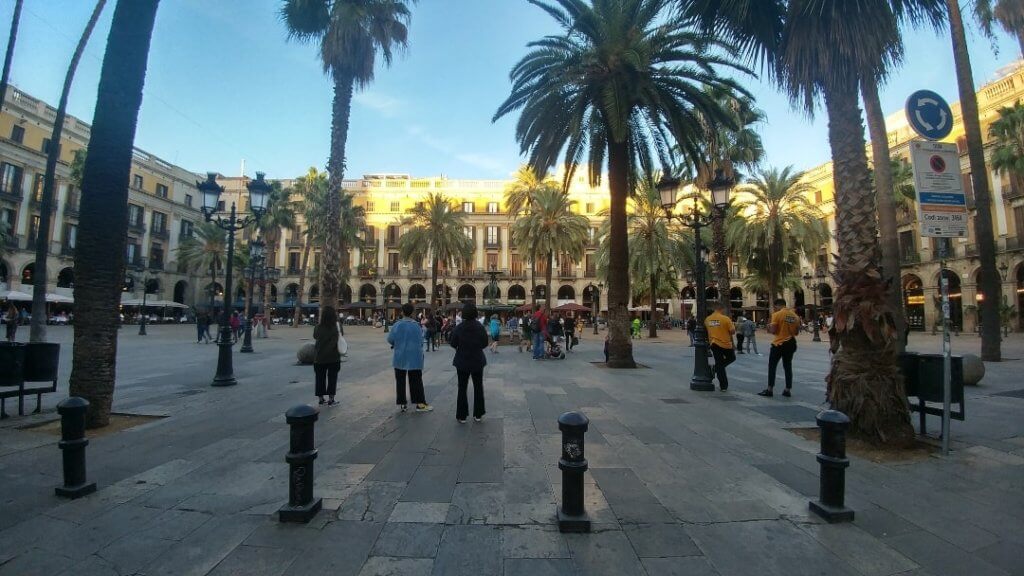
Mirador de Colom (Columbus Monument)
The Mirador de Colom, also known as the Columbus Monument or Columbus Column, is a famous landmark situated at the lower end of La Rambla.
If you have reached the Columbus Monument, it means you have reached the end of La Rambla and you are at Port Vell.
Right beside the monument is the Maritime Museum. The closest Metro Station is Drassanes.
The monument was constructed in honor of Christopher Columbus, the renowned explorer who completed his first voyage to the Americas in 1492.

The monument was built for the Universal Exposition held in Barcelona in 1888 as a tribute to Columbus and his discovery.
Mirador de Colom stands tall at a height of 60 meters (197 feet) and on the top is a statue of Columbus.
The statue, made of bronze, depicts Columbus holding a chart/map in his left hand and gesturing with the other toward the New World.
Visitors can take an elevator inside the column to reach a viewing platform located below the statue.

From the platform, you can enjoy panoramic views of Barcelona’s harbor and the cityscape.
In addition, the base of the monument is beautiful, with stairs and different sculptures.
Mirador de Colom is an iconic symbol of Barcelona and a popular tourist attraction.
It serves as a reminder of the city’s historical connection to exploration and discovery.
👉 Grab your ticket here: Barcelona: Columbus Monument
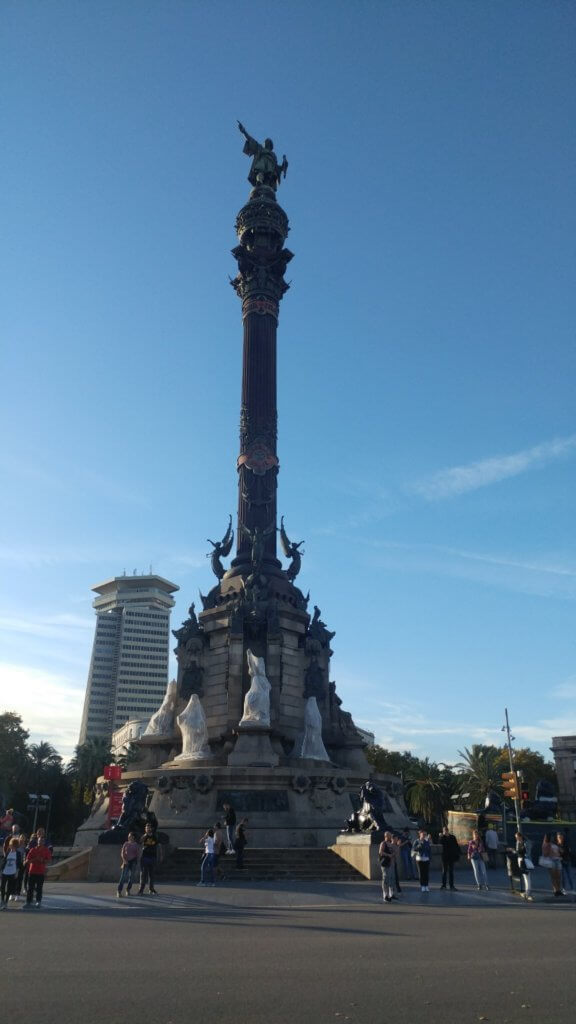
Flamenco Show
A Flamenco Show is a performance that showcases the traditional music, dance, and singing of Flamenco.
It is a vibrant and passionate art form originating in Andalusia, Spain.
Flamenco Shows are popular both in Spain and around the world as a way to experience the rich cultural heritage and artistic expression of flamenco.
They can vary in scale, from small intimate performances in intimate venues like tablao flamenco to larger productions in theaters or cultural centers.
The word “tablao” comes from the Spanish term “tabla,” which means a wooden board or platform.
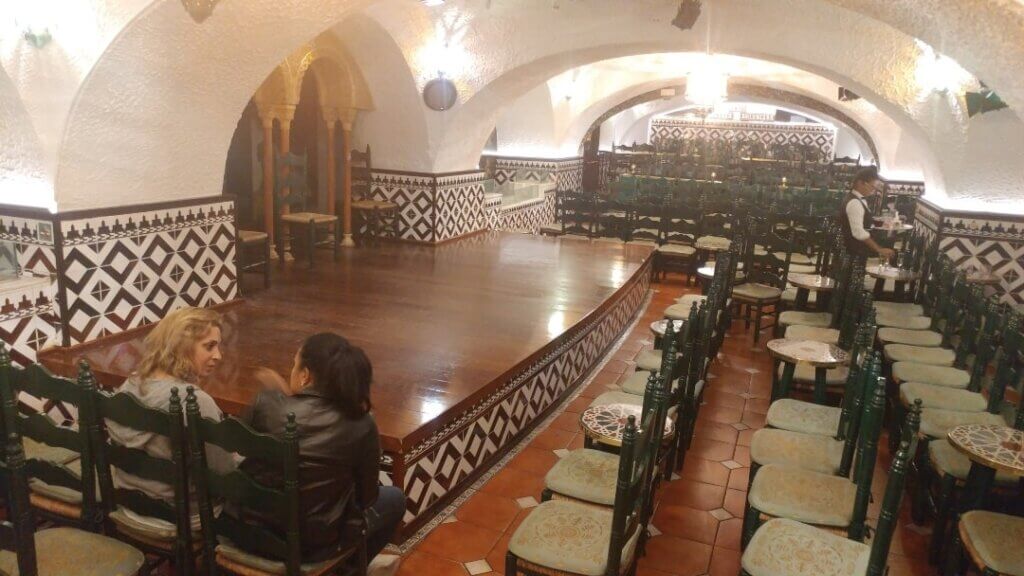
The atmosphere is usually intimate and intense, with performers engaging in improvisation and creating a profound connection with the audience.
Attending a Flamenco Show provides an opportunity to witness the raw emotion, technical skill, and cultural richness of this traditional Spanish art form.
It is an immersive experience that allows spectators to experience the soul-stirring music, passionate dance, and captivating storytelling of Flamenco.
👉 This is the exact show that we saw: Skip the Line Ticket: Flamenco Night at Tablao Cordobes, Barcelona
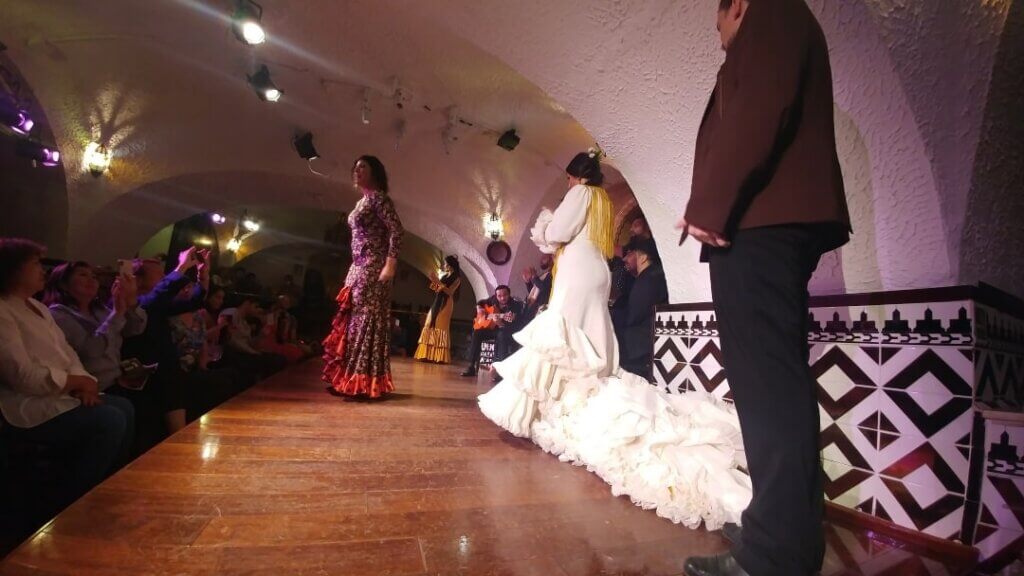
What happens at a Flamenco Show?
The Flamenco Show starts with a guitar solo, followed by passionate singing expressing deep emotions.
Flamenco dancers take the stage with intense footwork and movements, often incorporating props.
Rhythmic handclapping and percussion instruments contribute to the energetic atmosphere.
The performances are characterized by improvisation and interaction among the artists, creating a dynamic and captivating experience.
Also, the seating arrangement offers a close and intimate view of the stage.
That allows you to feel the authenticity and rawness of the performance.
In addition, the performers’ attire is stunning, adorned with lavish and vibrant colors.
Be prepared for the possibility of being in close proximity to the performers, as their movements can come quite near.
How many performers are in a Flamenco Show?
The show that we saw featured three acoustic guitarists and three male singers.
Also, they were accompanied by three female dancers and one male dancer.
Each dancer showcased their unique routines and exceptional skills.
The performances were individual, with one person dancing at a time.
Overall, the talent displayed by the dancers and musicians we observed was truly impressive.
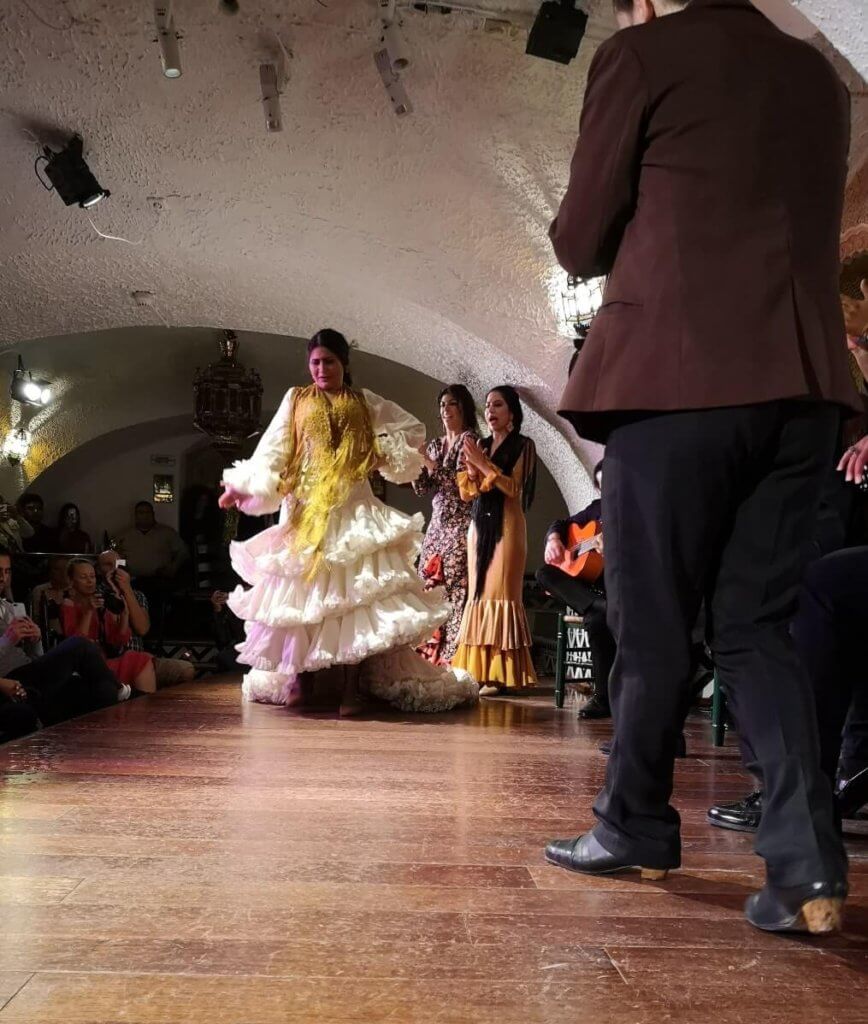
👉 This is the exact show that we saw: Skip the Line Ticket: Flamenco Night at Tablao Cordobes, Barcelona
The place offered dinner as well but we only went for the show (dinner was before the show).
The show was performed at Tablao Flamenco Cordobes, where we watched the show, and had a glass of cava (included in the ticket).
Keep in mind that during the performance you’re not allowed to clap.
That is so that you do not confuse the dancers who are also clapping as part of the performance.
Also, you are not allowed to take any pictures or videos.
The only time you can record is during the last song.
🎥Here are a few videos from that last song:
Flamenco Show at Tablao Cordobes, Barcelona Part 3
Flamenco Show at Tablao Cordobes, Barcelona Part 4
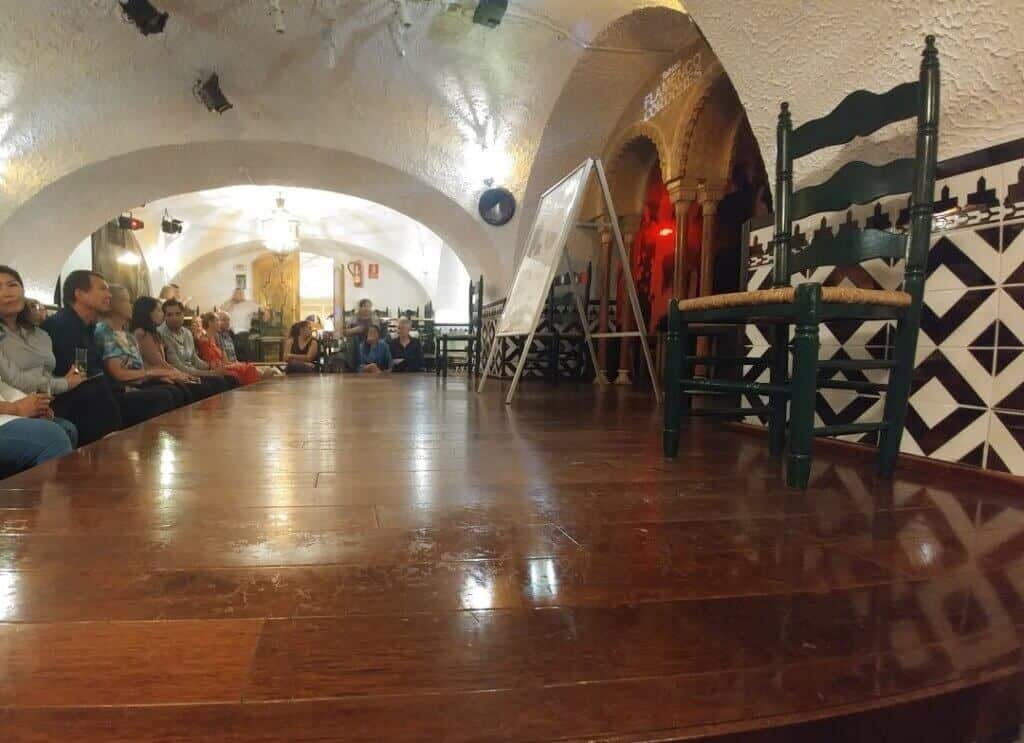
Are Flamenco Shows worth it?
Flamenco Shows are absolutely worth it for those seeking an immersive cultural experience.
They offer a glimpse into the rich traditions of Spanish Flamenco, with passionate music, intense dancing, and emotional storytelling.
Attending a Flamenco Show provides a unique opportunity to engage with Spanish culture and appreciate the artistry of this captivating art form.
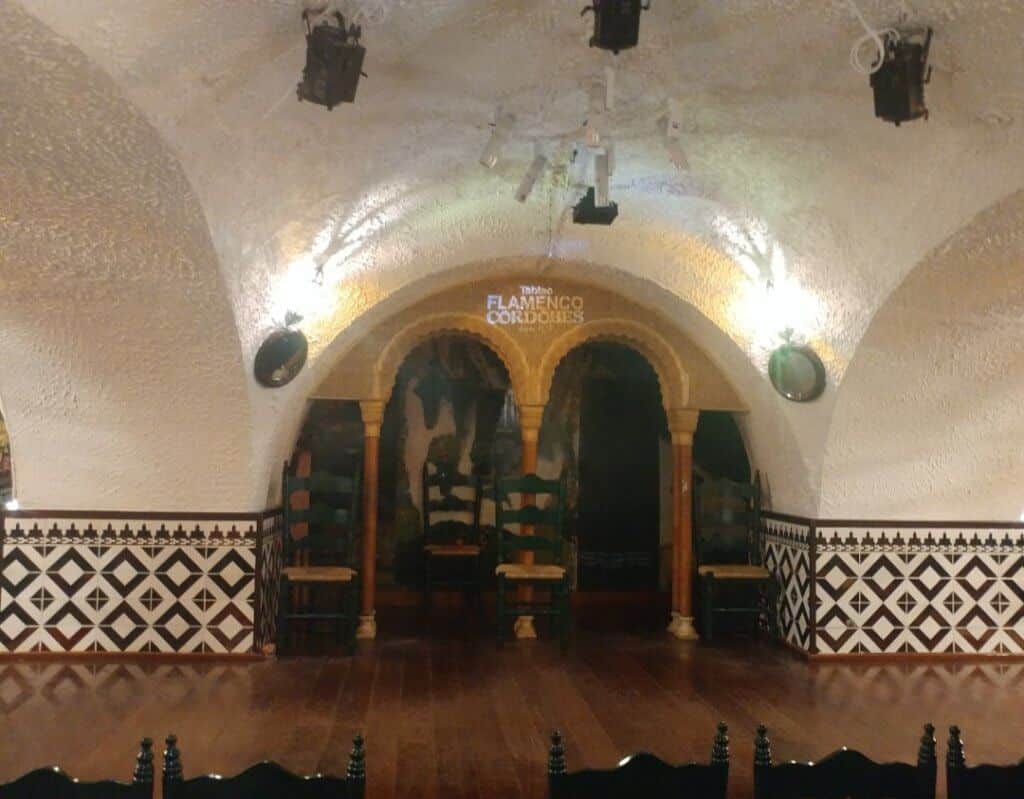
Is the Gothic Quarter in Barcelona safe?
Overall, La Rambla and the Gothic Quarter are pretty safe but like everywhere touristy, beware of pickpockets and stay away from anyone who looks suspicious.
We walked around pretty late in that whole area and we didn’t have any problems.
Keep in mind that the lower part (South) of La Rambla becomes a bit of a red-light district after a certain time at night.
Therefore, if you are worried about that stick to the North part.

Where To Stay In The Gothic Quarter?
If you’re planning a visit to this captivating neighborhood, you’ll find an array of wonderful accommodation options.
From charming boutique hotels nestled in medieval buildings to cozy guesthouses tucked away in narrow cobblestone streets, the Gothic Quarter offers a range of choices for every traveler’s taste and budget.
Gran Hotel Barcino
- Gran Hotel Barcino is located in the heart of the Gothic Quarter, close to Barcelona Cathedral and La Rambla
- Close to shops, restaurants, attractions, churches, and museums
- Free WiFi is available in all areas; however, no parking
- Air-conditioned and elegant rooms
👉 Check availability for your dates: Gran Hotel Barcino
Barcelona Hotel Colonial
- Barcelona Hotel Colonial is inside a colonial, stone building with a clock tower
- Close to La Rambla, Mirador de Colom, and the beach
- Free WiFi is available in all areas of the property; parking available nearby for 25 euros per day
- Rooms are bright, air-conditioned, and have a flat-screen TV & minibar
👉 Check availability for your dates: Barcelona Hotel Colonial
Map Of The Gothic Quarter, La Rambla & Flamenco Show
Conclusion: Barcelona: Gothic Quarter, La Rambla & Flamenco Show
In conclusion, a visit to Barcelona’s Gothic Quarter and La Rambla, followed by a Flamenco Show, offers a delightful combination of historical exploration, vibrant street life, and an immersive cultural experience.
The Gothic Quarter allows you to wander through narrow medieval streets, discover ancient landmarks, and soak in the charm of the city’s history.
La Rambla presents a bustling and lively atmosphere with its vibrant shops, cafes, and street performers.
Finally, the Flamenco Show brings the passion and intensity of this traditional Spanish art form to life, offering a truly captivating and memorable experience.
Together, these elements create a well-rounded and unforgettable journey through the heart of Barcelona’s cultural heritage.


